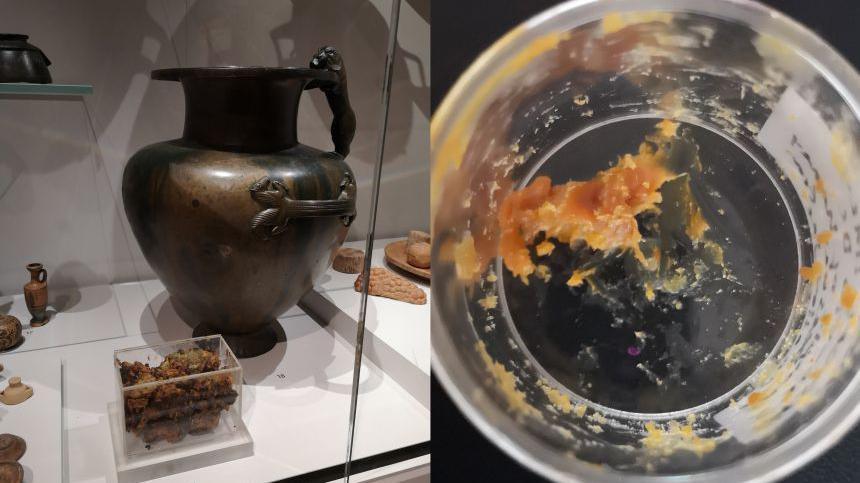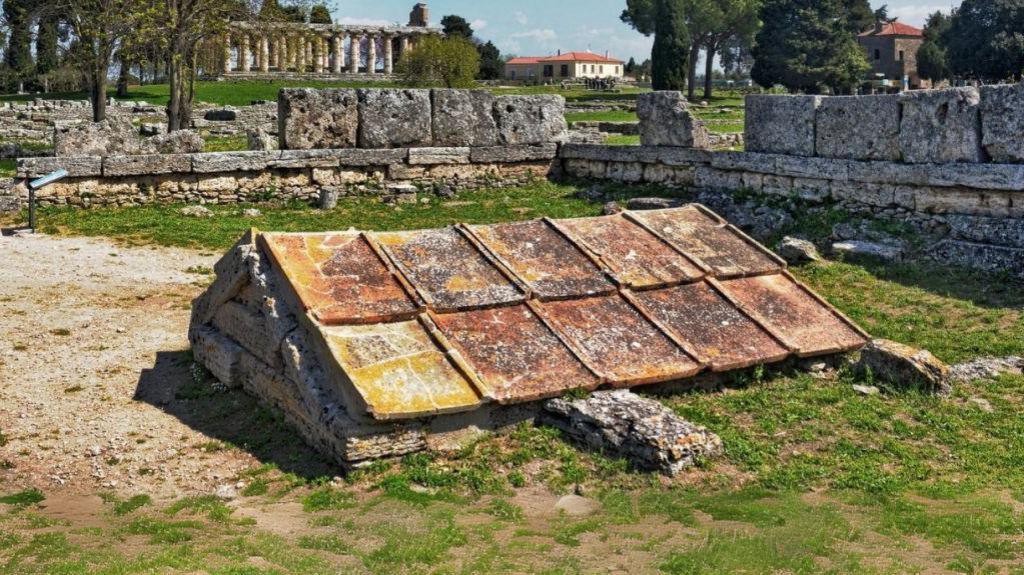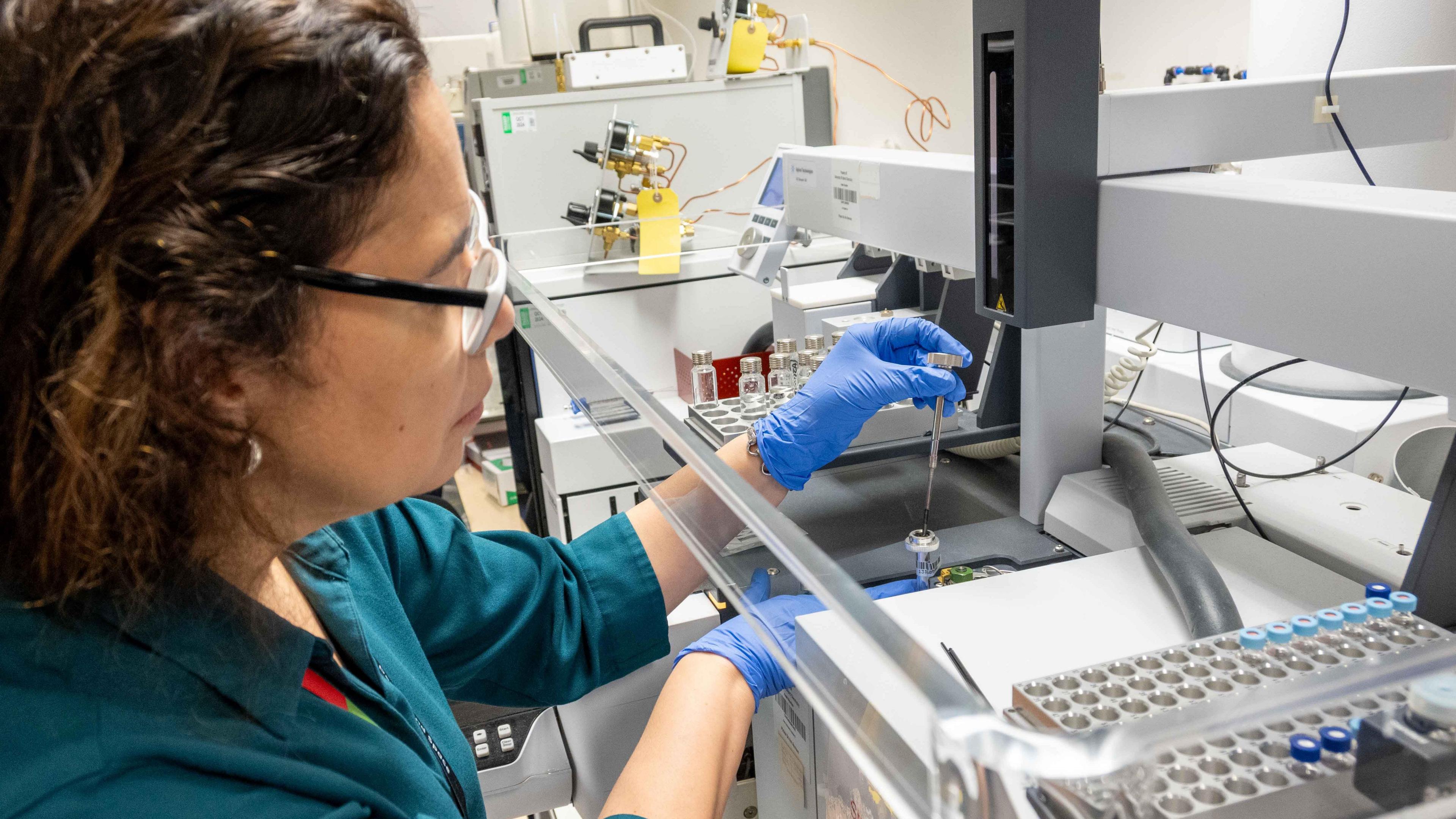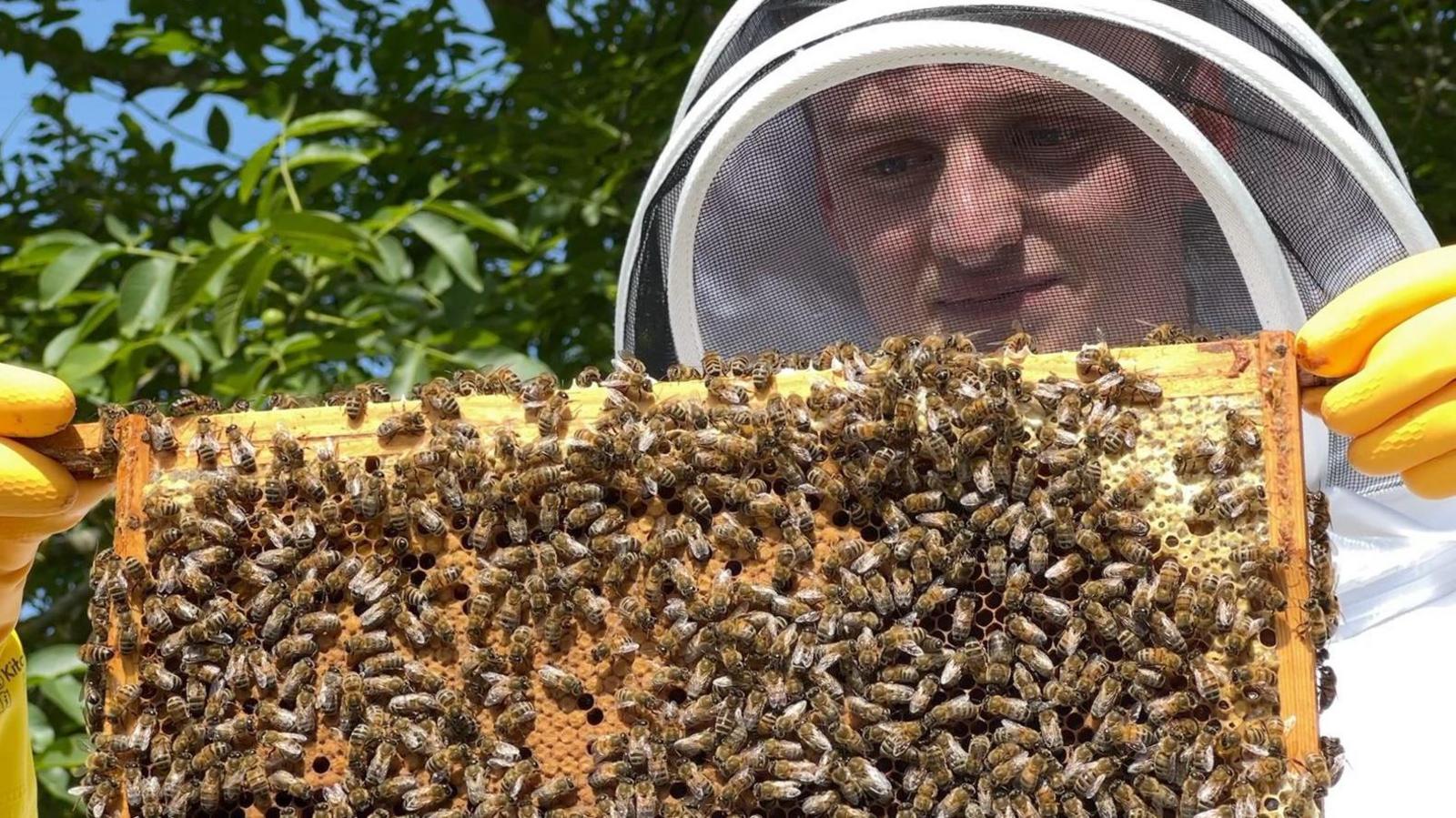Honey found in 2,500-year-old bronze jars

Modern analysis techniques have been used to determine the original substance was a form of honey
- Published
Chemists have identified a residue found in 2,500-year-old bronze jars as honey, solving a "decades-old archaeological puzzle".
The discovery was made by the University of Oxford's chemistry department, who reinvestigated jars excavated from a 6th Century BE Greek shrine in Paestum, southern Italy.
In a study published in the Journal of the American Chemical Society,, external researchers said biomolecular evidence showed the residue was likely in the form of honeycomb.
The bronze jars were originally found in an underground shrine, an hour and a half's drive away from Pompeii, in 1954.
They contained an orange-brown sticky substance archaeologists assumed was honey, as it was often left as an offering to gods or buried alongside the dead.
Dr Luciana da Costa Carvalho, project co-lead, said: "This research is a reminder that archaeological collections hold untapped scientific potential and how new information can be revealed when modern analytical techniques and multidisciplinary collaborations are combined."

The jars were found in an underground shrine in southern Italy in 1954
For 30 years, three different teams analysed the residue, but failed to confirm the presence of honey and said it was some sort of animal or vegetable fat contaminated with pollen and insect parts.
Now, chemists have used modern techniques to examine the contents of the bronze jar, through a partnership with the University of Oxford's Ashmolean Museum and the Archaeological Park of Pompeii.

Dr Luciana da Costa Carvalho said the discovery was a reminder of the scientific potential in archaeological collections
Professor James McCullagh, director of Oxford's mass spectrometry research facility in the department of chemistry, co-led the project.
He said the number of analytical techniques used for the study were "key to the success of this study".
"By applying several mass spectrometry and spectroscopic approaches we were able to reveal a comprehensive picture of the residue's molecular composition — enabling us to distinguish between contaminants, degradation products, and original biomarkers," he said.
A university statement added that the authors of the study now hoped their work would inspire further re-analysis of legacy materials, including those held in museum collections.
Allow YouTube content?
This article contains content provided by Google YouTube. We ask for your permission before anything is loaded, as they may be using cookies and other technologies. You may want to read Google’s cookie policy, external and privacy policy, external before accepting. To view this content choose ‘accept and continue’.
Get in touch
Do you have a story BBC Oxfordshire should cover?
You can follow BBC Oxfordshire on Facebook, external, X (Twitter), external, or Instagram, external.
Related topics
- Published21 June
